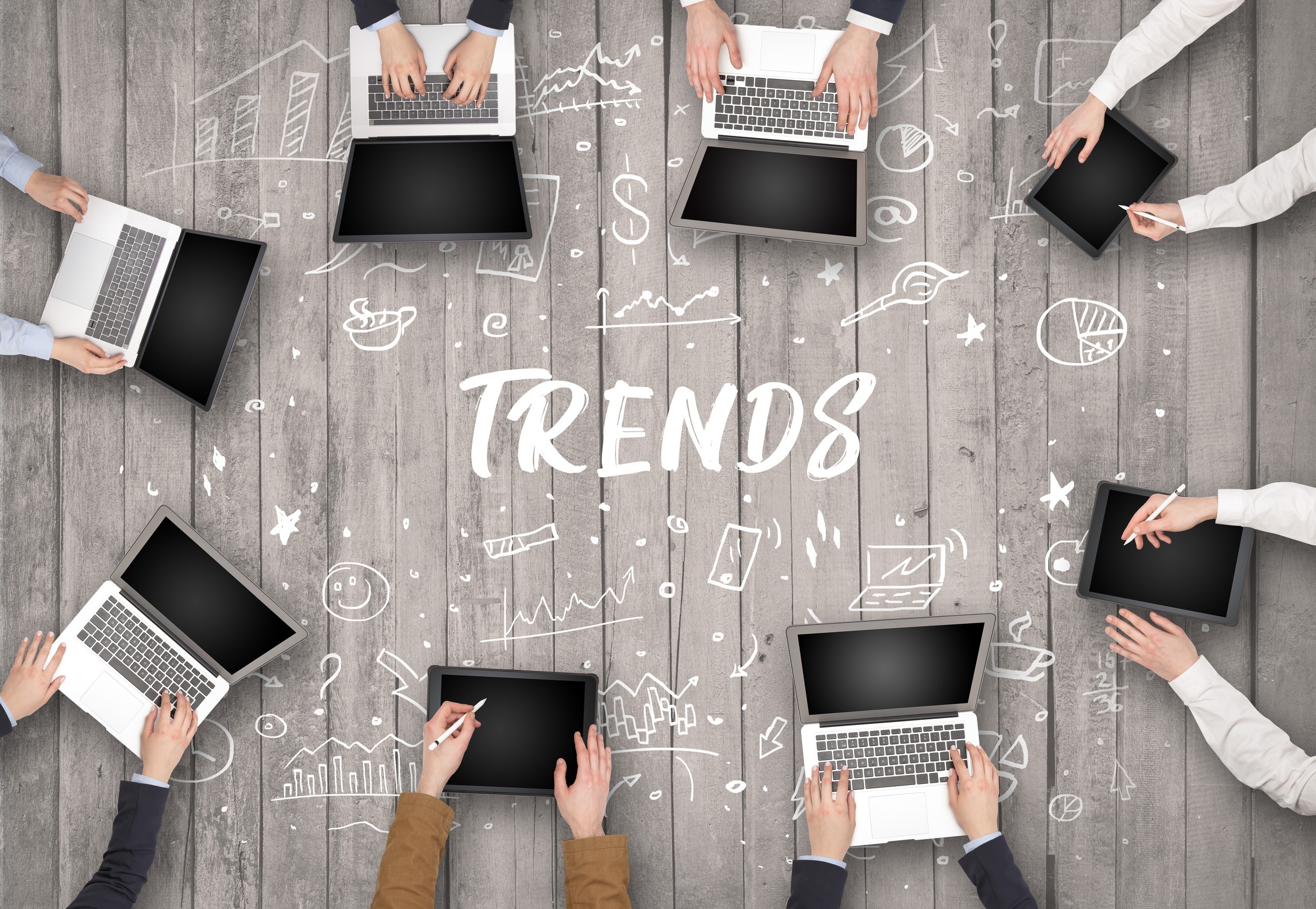Introduction
In today’s rapidly evolving digital ecosystem, effective web design requires more than visual appeal—it demands interactivity, performance, and accessibility. As consumer expectations shift and new technologies emerge, staying ahead of design trends can give your brand a competitive edge.
Mixture Web, a full-service creative agency, specializes in building websites that aren’t just visually compelling—they’re intuitive, conversion-focused, and future-friendly. This guide explores web design trends of 2025 and explains how you can harness them to elevate your online presence.
1. Micro‑Interactions That Matter
Tiny animations—like a hover-triggered button glow or a form field that “jiggles” on error—can elevate user experience by providing real-time feedback and delighting visitors.
- Hover Effects on buttons or icons create a sense of responsiveness.
- Form Responses (e.g., checkmark animation after input validation) improve usability.
- Loading Indicators (spinners, progress bars) reduce perceived waiting times.
Micro‑interactions are subtle yet powerful trust builders that encourage engagement.
2. Bold Typography & Custom Fonts
In 2025, typography isn’t just about readability—it’s about personality.
- Variable Fonts: Lightweight files that can morph weight or width on demand.
- Oversized Headlines: Perfect for highlighting key messaging above the fold.
- Unique Letterforms: Custom fonts or hand‑drawn lettering add distinctiveness without overwhelming.
When paired with minimalist layouts, bold typography can create dramatic, unforgettable impressions.
3. Dark Mode & Theme Toggles
Dark mode continues its rise, offering benefits that include reduced eye strain, energy efficiency, and a sleek aesthetic.
- User Preference Detection: Automatically switch between light/dark based on system settings.
- Brand‑Focused Color Schemes: Carefully select accent colors to maintain accessibility.
- Seamless Theme Switching: A toggle that allows visitors to switch themes on demand—enhancing user control.
Dark mode doesn’t just look cool; it enhances accessibility and modernization.
4. Immersive Scrolling & Parallax
When tastefully applied, immersive scroll effects can create a narrative-driven user experience.
- Parallax Layers: Background and foreground elements move independently, adding depth.
- Content Pinning: Sticky sections that guide users through featured information.
- Scroll‑Triggered Transitions: Subtle reveals as the user moves down the page.
These techniques encourage exploration and can be used to spotlight core messages or calls-to-action.
5. Inclusive & Accessible Design
Web accessibility is not just compliance—it’s a brand opportunity.
- Keyboard Navigation: Ensures site usability without a mouse.
- Screen‑Reader Compatibility: Semantic HTML and ARIA roles enhance experience for visually impaired users.
- Color Contrast Checks: Guarantee readability across devices and environments.
- Cognitive Accessibility: Keeping navigation simple and predictable helps users with learning differences.
Inclusive design fosters trust and broadens your potential audience.
6. Performance‑First Mindset
A visually stunning site won’t matter if it’s slow. Performance remains key:
- Image Optimization: Use next-gen formats like WebP and AVIF; implement lazy loading.
- Code Minimization: Eliminate unused CSS, defer non-critical scripts.
- Static‑First Builds: Static site generators (e.g., Eleventy, Hugo) can eliminate server delays.
- User‑centric Metrics: Focus on Largest Contentful Paint (LCP), Cumulative Layout Shift (CLS), and interaction readiness.
Performance enhances SEO, conversions, and user satisfaction.
7. Conversational Interfaces & AI
The rise of AI-powered design means smarter, more interactive user experiences.
- Chatbots: Offer immediate support or pre-qualify leads.
- Prompt‑Driven Features: Search fields with autocomplete and content suggestions.
- AI‑Generated Imagery & Illustrations: Creatively use AI tools for hero graphics or background visuals.
Conversational design builds trust, guides user flow, and can even reduce support costs.
8. Eco‑Friendly & Ethical Web Design
As awareness grows, so do expectations for sustainable web practices.
- Green‑hosting Providers: Use renewable energy to power your site.
- Carbon Footprint Optimization: Build lean pages with minimal data transfer.
- Ethical UX Patterns: Avoid dark patterns; build trust through clarity and honesty.
Consumers appreciate transparency—and eco-friendly design communicates values.
9. Augmented Reality & 3D Elements
For select industries, AR previews and 3D visuals deepen engagement.
- Product Try‑On Tools: From furniture placement to eyewear overlays.
- Interactive 3D Models: Users can rotate or zoom in directly on the webpage.
- AR Walk‑Throughs: Real-estate or event venues benefit from immersive previews.
These technologies offer memorable and functional brand experiences.
10. Modular Design & Atomic Frameworks
Atomic design systems ensure scalability and consistency.
- Reusable Components: Hero sections, testimonials, feature cards, etc.
- Pattern Libraries: Maintain UI coherence and accelerate development.
- Design Tokens: Capture colors, spacing, and typography centrally.
A modular approach simplifies maintenance and future expansions.
Integrating Trends Thoughtfully
Not every trend fits every brand or audience. Mixture Web recommends:
- Define Core Goals: Target conversions, build trust, or entertain?
- Prioritize Usability: Enhance design without sacrificing speed or accessibility.
- Prototype & Test: Validate new features before wide rollout.
- Monitor Analytics: Track how changes impact bounce rates, loads times, conversions.
- Iterate Over Time: Start small—house in place micro‑interactions, then expand.
A/B testing and user feedback guide successful and strategic evolution.
Why Mixture Web Is Your Digital Partner
- Full‑Service Expertise: Branding, UI/UX, development, SEO and strategy under one roof.
- Performance‑First Approach: Websites built to load fast and rank well.
- Inclusive Designers: Accessibility experienced from day one.
- Collaborative Process: Workshopped sprints, frequent reviews, and shared style guides.
- Long‑Term Partnerships: We’re here to optimize, iterate, and scale with your brand.
Whether you’re launching a new site or revitalizing an existing one, we merge creativity with technical proficiency to deliver results.
Summary
Powerful web design in 2025 blends aesthetics, accessibility, and engagement. Trends like micro‑interactions, dark mode, conversational interfaces, and performance optimization each play a role—but the magic lies in thoughtful integration:
- Create memorable experiences without losing speed.
- Tell your brand story through typography and animation.
- Prioritize users of all abilities.
Resources: W3C – Web Content Accessibility Guidelines (WCAG)
That’s how you build digital platforms that convert—and endure.
If you’re curious about how these trends can elevate your online presence or want to discuss a custom project, feel free to contact Mixture Web to start the conversation and explore innovative solutions.
